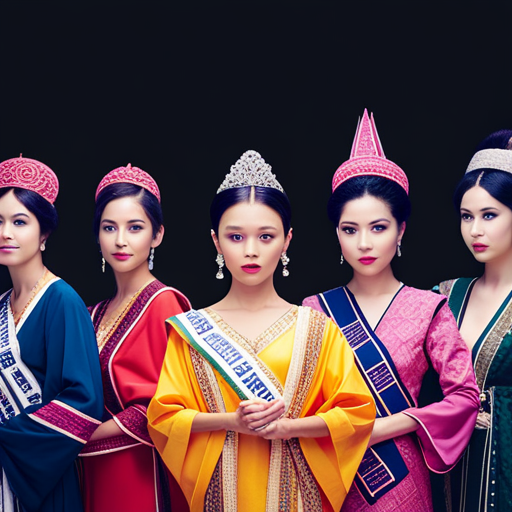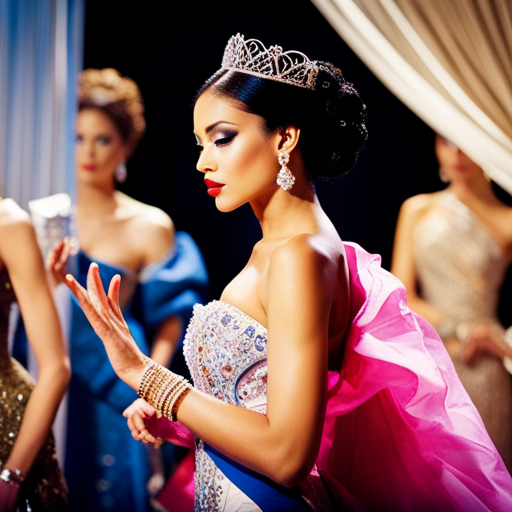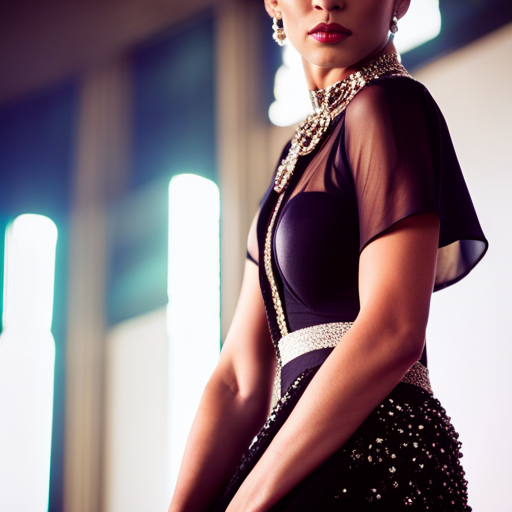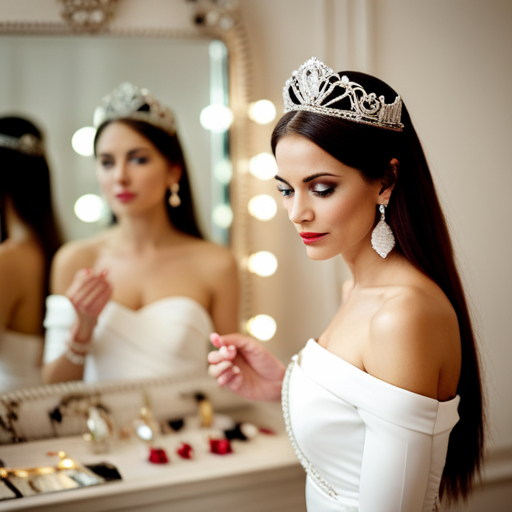Balancing Tradition and Modernity in Pageant Outfits
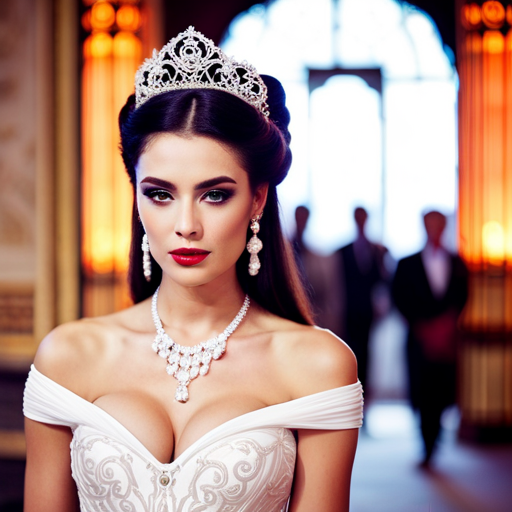
In the world of pageantry, the fusion of tradition and modernity in outfit design is akin to a delicate dance, intertwining cultural heritage with contemporary fashion sensibilities. This article delves into the intricate art of harmonizing traditional costume elegance with the nuances of modern style, navigating the complexities of personal expression and global influences.
From understanding cultural significance to embracing innovation, it explores the nuanced balance required to create pageant outfits that are both timeless and trendsetting.
Understanding Cultural Significance
The cultural significance of pageant outfits is a crucial aspect that requires thoughtful consideration and understanding in the quest for a balanced representation of tradition and modernity. Pageant outfits are not merely garments; they are symbolic representations of a community’s heritage, values, and identity. Understanding the historical context and cultural symbolism embedded in these outfits is paramount in ensuring that they are respectfully and accurately represented in the modern pageantry.
Cultural appropriation is a pertinent concern when it comes to pageant outfits. As fashion evolves, it is essential to acknowledge the origins of specific styles, patterns, and designs to avoid appropriating elements that hold deep cultural significance to certain communities. Respectful representation involves engaging with and learning from the cultures that inspire these outfits, rather than simply borrowing superficial aesthetics without understanding their meaning.
Moreover, the evolution of fashion has brought about a fusion of traditional and contemporary elements in pageant outfits. This amalgamation can be a powerful tool for promoting cultural diversity and understanding. When done thoughtfully and respectfully, it allows for the celebration and preservation of tradition while embracing modernity.
Therefore, understanding the cultural significance of pageant outfits is essential in navigating the delicate balance between tradition and modernity in the pageantry world.
Incorporating Modern Fashion Trends
In navigating the delicate balance between tradition and modernity in pageant outfits, it is imperative to incorporate modern fashion trends with respect for cultural significance. When considering incorporating modern fashion trends, it is essential to maintain a sense of cultural fusion, blending contemporary styles with traditional elements to create a harmonious and culturally respectful ensemble. Moreover, the influence of global fashion trends can be incorporated while ensuring that the outfit remains true to its cultural roots.
To illustrate the concept of incorporating modern fashion trends in pageant outfits, the following table outlines examples of how traditional elements can be infused with modern fashion trends, resulting in a balanced and culturally respectful ensemble.
| Traditional Element | Modern Fashion Trend |
|---|---|
| Intricate Embroidery | Sheer and Mesh Fabrics |
| Cultural Motifs | Asymmetrical Silhouettes |
| Indigenous Textiles | Bold Color Blocking |
Navigating Personal Expression
When it comes to navigating personal expression in pageant outfits, there are several key points to consider.
Firstly, the incorporation of cultural heritage in fashion allows contestants to showcase their roots and traditions through their attire, creating a meaningful and authentic representation of their identity.
Additionally, embracing individual style enables contestants to express their unique personality and values, adding depth and character to their overall presentation.
Lastly, the evolution of pageant attire reflects the changing dynamics of fashion and societal norms, highlighting the ongoing adaptation of traditional elements to modern trends.
Cultural Heritage in Fashion
Navigating personal expression through cultural heritage in fashion requires a delicate balance between honoring tradition and embracing modernity. This balance is essential for individuals to authentically represent their cultural heritage while engaging with contemporary fashion trends.
When addressing cultural heritage in fashion, it is crucial to consider the following:
-
Fashion Evolution: Understanding the historical evolution of traditional attire and its adaptation to modern fashion trends is paramount in navigating personal expression through cultural heritage.
-
Cultural Representation: It is essential to ensure that the incorporation of cultural elements in fashion is respectful and accurately represents the cultural heritage being celebrated.
-
Individual Interpretation: Encouraging individuals to express their personal connection to their cultural heritage through fashion allows for a diverse and inclusive representation within the fashion industry.
Embracing Individual Style
Embracing individual style in pageant outfits requires a harmonious blend of tradition and modernity, reflecting a unique and personal connection to cultural heritage. This fusion of fashion allows for individual empowerment, enabling contestants to express their personalities while honoring their roots. By navigating personal expression within the constraints of pageantry, participants can redefine traditional attire to align with their individuality, creating a new narrative that celebrates diversity and self-expression. This fashion fusion is not merely about aesthetic appeal but also serves as a platform for cultural representation and individualism. The table below illustrates the integration of tradition and modernity in pageant outfits, showcasing how individual style can be celebrated while honoring cultural heritage.
| Traditional Elements | Modern Elements | Individual Expression |
|---|---|---|
| Cultural motifs | Contemporary cuts | Personalized details |
| Handcrafted embellishments | Innovative fabrics | Unique accessories |
| Time-honored silhouettes | Avant-garde designs | Customized color palettes |
Transitioning from this exploration of individual style, it is imperative to understand the evolution of pageant attire and its impact on societal norms and fashion trends.
Evolution of Pageant Attire
Continuing the exploration of individual style in pageant outfits, the evolution of pageant attire has played a significant role in shaping societal norms and influencing fashion trends. This evolution is marked by a blend of cultural fusion and fashion evolution, reflecting the changing attitudes towards tradition and modernity.
1) Cultural fusion: Pageant attire has evolved to embrace a fusion of cultural elements, incorporating traditional fabrics, designs, and symbols from diverse backgrounds. This reflects a globalized and inclusive approach to fashion, celebrating diversity and heritage on the pageant stage.
2) Fashion evolution: The evolution of pageant attire has mirrored broader fashion trends, adapting to contemporary styles and silhouettes while retaining elements of sophistication and elegance. This reflects the dynamic nature of fashion and its ability to adapt to societal changes while preserving timeless grace and charm.
3) Individual expression: Pageant attire has evolved to prioritize individual expression, allowing contestants to showcase their unique personalities and fashion sensibilities while adhering to the pageant’s standards of grace and poise. This evolution highlights the empowerment of contestants to embrace their individuality within the traditional framework of pageantry.
Showcasing Traditional Costume Elegance
The elegance of traditional costumes in pageants is a reflection of cultural heritage in the realm of fashion. As traditional attire continues to evolve, it embraces modern influences while retaining its intrinsic cultural significance.
Moreover, the global appeal of tradition in pageant outfits highlights the enduring allure and relevance of showcasing traditional costume elegance in contemporary beauty pageants.
Cultural Heritage in Fashion
Showcasing traditional costume elegance in fashion brings an opportunity to celebrate cultural heritage on a global platform. This promotes heritage preservation and fosters understanding and appreciation of diverse traditions.
Here are three key aspects of cultural heritage in fashion:
-
Fashion Fusion: Integrating traditional costume elements into modern fashion designs fosters cultural exchange and innovation, creating a fusion of the old and the new. This fusion not only keeps traditional clothing relevant but also introduces it to new audiences, ensuring its preservation.
-
Artisanal Craftsmanship: Traditional costumes often involve intricate craftsmanship, passed down through generations. By incorporating these techniques into fashion, designers provide a platform for artisans to showcase their skills, supporting local economies and preserving traditional craftsmanship.
-
Global Representation: Showcasing traditional costume elegance in fashion events provides a global platform for diverse cultural heritages, promoting inclusivity and understanding across different communities. This representation fosters a sense of pride and appreciation for cultural diversity, contributing to a more inclusive fashion landscape.
Evolving Traditional Attire
Evidencing the evolution of traditional attire, the incorporation of heritage-rich elements in pageant outfits epitomizes the harmonious blend of cultural legacy and contemporary aesthetics.
This evolution is evident in the way traditional costumes are being reimagined to strike a balance between honoring cultural roots and embracing modernity. Designers are strategically infusing traditional fabrics, motifs, and craftsmanship with modern silhouettes and styling techniques, offering a fresh take on traditional attire.
The juxtaposition of traditional versus modern elements in these outfits not only showcases the richness of cultural evolution but also highlights the adaptability of tradition in today’s globalized world.
This evolution signifies a shift from merely preserving traditional attire to actively celebrating and showcasing its elegance in a way that resonates with the present generation.
Global Appeal of Tradition
An exemplary showcase of traditional costume elegance in pageant outfits demonstrates the global appeal of cultural heritage on a prestigious platform. This appeal is evident in the following ways:
-
Cultural Fusion: Pageant outfits that elegantly blend traditional elements with modern fashion trends showcase the beauty of cultural fusion. By incorporating traditional textiles, embroidery, or motifs into contemporary silhouettes, designers create outfits that resonate with audiences worldwide.
-
Fashion Evolution: The global appeal of tradition in pageant outfits also reflects the ongoing evolution of fashion. As traditional costumes adapt to modern aesthetics, they become timeless yet relevant, appealing to a diverse audience and showcasing the rich heritage of different cultures.
-
Cross-Cultural Appreciation: When pageant outfits highlight traditional costume elegance, they promote cross-cultural appreciation, fostering understanding and respect for diverse traditions and aesthetics on a global stage.
Balancing Global and Local Influences
Balanced carefully, the pageant outfits harmonize global and local influences with a nuanced approach. In today’s world, where global fashion trends permeate every aspect of the industry, pageant outfits are not immune to these influences. Pageant designers often blend global fashion elements with local traditions to create a unique and captivating aesthetic. These outfits showcase a delicate balance between embracing international styles and honoring the rich cultural heritage of the contestants.
Global fashion trends are seamlessly integrated into the pageant outfits, incorporating modern silhouettes, innovative fabric choices, and contemporary embellishments. However, this infusion of global influences is thoughtfully juxtaposed with elements that pay homage to local traditions. Whether it’s incorporating traditional motifs, indigenous textiles, or indigenous craftsmanship, these elements add a distinct cultural flair to the outfits.
Moreover, the harmonious fusion of global and local influences in pageant outfits serves as a visual representation of cultural diversity and global interconnectedness. It celebrates the beauty of different heritages while staying relevant in the ever-evolving world of fashion. Ultimately, the balanced integration of global and local influences in pageant outfits not only showcases the creativity of the designers but also highlights the contestants’ pride in their cultural identities.
Embracing Innovation in Pageant Attire
The integration of innovative design elements into pageant attire enhances the harmonious fusion of global and local influences, ensuring a captivating and contemporary aesthetic. This embrace of innovation in pageant attire reflects a keen awareness of the evolving fashion landscape and the need to stay relevant in a rapidly changing world.
Key elements of this trend include:
-
Technological Integration: Incorporating cutting-edge materials and technology into pageant attire, such as 3D-printed embellishments or LED lighting, adds a futuristic and avant-garde dimension to the outfits.
-
Sustainable Practices: Embracing innovative designs involves a shift towards sustainability, with contestants and designers opting for eco-friendly fabrics, upcycling techniques, and zero-waste production methods to reduce the environmental impact of pageant attire.
-
Cultural Fusion: Innovative designs in pageant attire often draw inspiration from diverse cultures and contemporary influences, celebrating global interconnectedness and promoting inclusivity on the international stage.
This progressive approach not only elevates the visual appeal of pageant outfits but also aligns with the values of a modern society that values creativity, sustainability, and cultural diversity. Embracing innovation in pageant attire is a testament to the industry’s ability to adapt and thrive in an ever-changing world.
Frequently Asked Questions
How Do Pageant Outfits Vary Across Different Cultures and Traditions?
Pageant outfits vary across cultures and traditions due to cultural influences and fashion evolution. Each culture’s unique traditions, historical influences, and societal norms shape the design, colors, fabrics, and embellishments of pageant attire, reflecting the rich diversity of global fashion.
What Are Some Common Misconceptions About Traditional Pageant Attire?
Misconceptions about traditional pageant attire often stem from a narrow view of cultural significance. While gender norms and historical significance shape these outfits, they are also subject to modern interpretations that blend tradition with contemporary fashion.
How Can Contestants Incorporate Sustainable and Eco-Friendly Fashion Into Their Pageant Outfits?
Contestants can incorporate sustainable fashion and eco-friendly designs into their pageant outfits by embracing innovative materials, such as recycled fabrics and organic textiles. They can also draw inspiration from cultural influences to create unique, environmentally conscious ensembles.
Can Pageant Outfits Be a Form of Cultural Appropriation, and How Can Contestants Avoid This?
Respecting cultures is paramount in pageant fashion expression. Cultural sensitivity must guide outfit choices to avoid appropriation. Contestants can engage with local experts, understand the significance of attire, and seek inspiration from without appropriating.
What Role Does Technology Play in the Design and Presentation of Modern Pageant Attire?
Digital innovation and fashion technology have revolutionized the design and presentation of modern pageant attire. Garment customization, sustainable design, and cultural sensitivity in fashion reflect a shift towards environmental impact in pageant attire, embracing contemporary trends.
Conclusion
In conclusion, the delicate dance between tradition and modernity in pageant outfits can be likened to the intricate weaving of a tapestry. Each thread represents a cultural tradition, while the overall design reflects the ever-changing landscape of fashion.
By embracing both the timeless elegance of traditional costumes and the innovative trends of modern fashion, pageant participants can create outfits that honor their heritage while showcasing their personal style and grace on a global stage.
